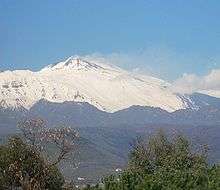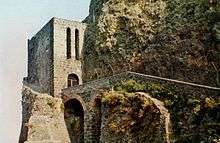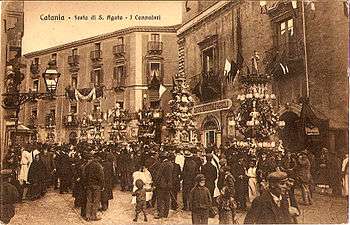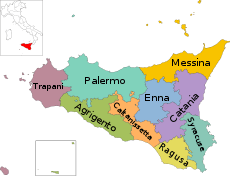Province of Catania




The Province of Catania (Italian: Provincia di Catania; Sicilian: Pruvincia di Catania) was a province in the autonomous island region of Sicily in southern Italy. Its capital was the city of Catania. It was replaced by the Metropolitan City of Catania starting from 4 August 2015.
History
The Province of Catania was founded by Greeks, in 729 B.C. It was conquered by the Roman, in the First Punic War, in 263 BC.[1] It had experienced many volcanic eruptions from the Mount Etna, of which the first eruption was recorded in 475 BC.[2] It was hit by a devastating earthquake in 1169, which caused an estimated death toll of about 15,000 people in the city of Catania alone.[3] In 1669, it was also affected by Mount Etna's volcanic eruption, in which the death toll was about 17,000 people alone in the city of Catania.[2] It was hit by another earthquake in 1693, which resulted in the death of about 12,000 people (63% population at the time).[4]
Geography
The province of Catania was one of nine provinces in the island of Sicily[5] which is the largest island in the Mediterranean Sea.[6] It met the Ionian Sea at the north-east. The Province of Caltanissetta and the Province of Enna lied to the west, the Province of Ragusa and the Province of Siracusa lied to the south, and the Province of Messina lied to the north. It also had the largest active volcano of Europe, Mount Etna. The provincial capital and largest commune was the city of Catania.[7]
See also

- Metropolitan City of Catania
References
- ↑ Inc, Merriam-Webster (1997). Merriam-Webster's Geographical Dictionary. Merriam-Webster. p. 222. ISBN 9780877795469.
- 1 2 "Mount Etna erupts - Mar 08, 1669 - HISTORY.com". HISTORY.com. Retrieved 2017-09-18.
- ↑ Falcando, Ugo (1998). The History of the Tyrants of Sicily by "Hugo Falcandus," 1154-69. Manchester University Press. p. 216. ISBN 9780719054358.
- ↑ "Informazioni sul terremoto". storing.ingv.it. Retrieved 2017-09-18.
- ↑ Klotz, Stefan (2004). Cross Sectional Dependence in Spatial Econometric Models: With an Application to German Start-up Activity Data. LIT Verlag Münster. p. 135. ISBN 9783825879181.
- ↑ Diamond, Jon (2017). The Invasion of Sicily 1943. Pen and Sword. p. 44. ISBN 9781473896123.
- ↑ Domenico, Roy Palmer (2002). The Regions of Italy: A Reference Guide to History and Culture. Greenwood Publishing Group. pp. 283–284. ISBN 9780313307331.

